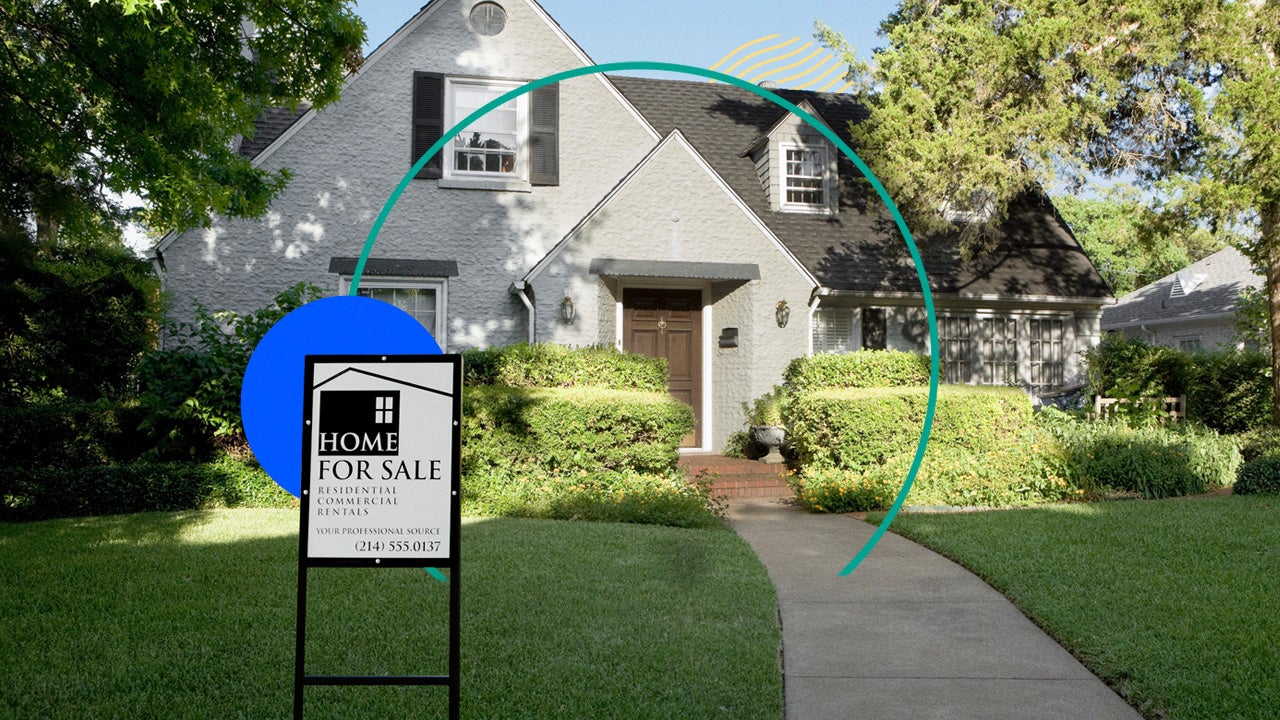Housing market still a struggle for first-time buyers

The housing market continues to be rough for hopeful buyers, but that’s particularly true right now for first-time homebuyers. “They’re finding it difficult to enter the homebuying market, with limited affordable housing inventory and higher interest rates,” says Jessica Lautz, deputy chief economist and vice president of research for the National Association of Realtors (NAR). NAR’s 2023 Profile of Home Buyers and Sellers, based on a survey of recent buyers nationwide, confirmed this, revealing that the annual percentage of first-time buyers was well below average. Read on for more insights.
2023 homebuyer and seller statistics
- Age of typical home seller: 60
- Age of typical first-time buyer: 35
- Age of typical repeat buyer: 58
- Number of years sellers typically lived in house before selling: 10
- Percentage of sellers who worked with a real estate agent: 89
- Percentage of sellers who sold by owner (without an agent): 7
- Percentage of buyers who worked with a real estate agent: 89
- Percentage of buyers who paid more than asking price: 25
- Percentage of buyers who financed the purchase: 80
SOURCE: NAR 2023 Profile of Home Buyers and Sellers
First-time buyers struggle with housing market
According to Bankrate’s Financial Security survey in 2023, 74 percent of U.S. adults consider homeownership an important part of the American dream. That’s ahead of having children (42 percent) and a successful career (61 percent).
Yet today’s challenging real estate market continues to keep many first-time homebuyers away. In fact, their share of the market last year was only 32 percent, according to the NAR report — below the average of 38 percent and the fourth lowest share seen in more than 40 years, when NAR first started collecting this data.
Not only did 2023 see a low percentage of first-time buyers, but the ones it did see were older, with a typical age of 35. Although this is a one-year decrease from the year before, it’s still the second highest age seen in the data set.
“For the last two years, first-time buyers have been the oldest recorded in four decades,” says Lautz. “They need to save for longer periods of time and have struggled to have their offer accepted on a home, as multiple bids are common in this limited-inventory environment.”
This is a challenging housing market for first-time homebuyers.— Greg McBride, Bankrate Chief Financial Analyst
Market conditions have made things particularly difficult for first-time buyers, who have had to contend with historical highs in both interest rates and asking prices. “This is a challenging housing market for first-time homebuyers due to high mortgage rates, high home prices and the inventory of homes available for sale continuing to be very limited,” says Greg McBride, CFA, Bankrate’s chief financial analyst.
According to Bankrate’s survey, 73 percent of non-homeowners who hope to own someday cited personal affordability issues as their largest obstacle. Insufficient income was cited by 46 percent, and 40 percent noted an inability to afford a down payment and closing costs. Meanwhile, 53 percent named market conditions, like low inventory and high mortgage rates, as an obstacle.
Types of homes purchased in 2023
Single-family homes were again the most popular option for 2023 buyers, with 79 percent of sales being traditional detached structures. Of all buyers surveyed, 87 percent purchased an existing, previously owned home, while 13 percent purchased new construction. The typical home purchased was 1,860 square feet, with three bedrooms and two bathrooms.
Location-wise, neighborhood was the top factor considered, with 60 percent of buyers citing the quality of the neighborhood above all else — that’s an increase of 11 percent from the year before. Proximity to friends and family was also important, coming in at 45 percent. Buyers moved a median distance of 20 miles from their previous homes, a significant decrease from 50 miles the year before.
Finding and financing homes
Finding a home took the same amount of time it did last year, with buyers still spending a median of 10 weeks on their search — two weeks longer than in 2020 and 2021. And they typically purchased the home at full asking price, with 25 percent paying above ask.
When it came to search methods, looking online was by far the most popular approach, with 100 percent of buyers saying they browsed online listings. Ultimately, the median number of homes looked at in person was 7, with 89 percent buying through a real estate agent or broker.
Despite mortgage rates continuing to be high, the vast majority of recent buyers — 80 percent — financed their purchase. As recently as 2021, that figure was an even higher 87 percent. And 82 percent of buyers saw purchasing a home as a good financial investment.
How to qualify for a loan as a first-time buyer
Affordability continues to weigh on prospective homebuyers. In fact, a recent Redfin analysis found that only about 16 percent of listings in 2023 were affordable for the typical U.S. household — the lowest share on record.
“The affordability issues aren’t going away overnight, but will ease over time,” says McBride. “A more pedestrian pace of home price appreciation in the next few years will allow incomes to play a bit of catch-up to home prices.” If you’re hoping to become a homeowner, here are some of the most important financial factors to consider when applying for a mortgage:
- Credit score: As a rule, the higher your credit score, the better mortgage rate you will be eligible for. But different loan types have different credit requirements. Conventional loans typically require a minimum credit score of 620. Federal Housing Administration loans, which are popular with first-time buyers, have lower minimums: 500 with a 10 percent down payment, or 580 with a 3.5 percent down payment.
- Debt-to-income ratio: Lenders will also look at your DTI when they assess you for a mortgage. This value reflects how much income you bring in versus how much debt you owe each month, including things like credit card bills and student loans.
- Down payment amount: Saving enough for a down payment is a crucial step for any homebuyer, as this is a significant chunk of money. It’s often considered standard to put down 20 percent of the home’s purchase price, which allows you to avoid paying for private mortgage insurance. But many loans allow you to put down much less, and some require no down payment at all. First-time buyers should be sure to investigate down payment assistance programs in their area, which can offer help in overcoming this financial roadblock.
However, keep in mind that “qualifying for a loan might be the easy part,” says McBride. “Just because you qualify doesn’t mean you’re not biting off more than you can chew. Consider your total financial readiness and map out a complete budget of what your monthly expenses will be as a homeowner. Be sure to include property taxes, homeowners’ insurance, maintenance, repairs and higher utility bills — the mortgage payment isn’t the only cost you’ll face.”
FAQs
-
The country’s ongoing housing shortage is a result of two primary factors, says Lautz. “The inventory crisis is a product of both the lock-in effect of homeowners who are unwilling or unable to move with today’s higher mortgage interest rates, but also underbuilding of new inventory,” she says. “Since the Great Recession, home building activity has struggled to meet the demands of housing consumers.”
-
The country’s inventory of homes for sale, while still very low, is actually increasing. National Association of Realtors data shows that inventory in December 2023 was up 4.2 percent from the same time last year. Although home building has started to tick upward, “more steady increases are needed to meet the current demand,” says Lautz.
-
Probably not, says Lautz. In fact, NAR expects prices to increase, albeit not by much: “NAR’s forecast expects annual home price growth in 2024 just under 1 percent,” she says. “Home prices will continue to rise as demand enters the market in the spring, likely in conjunction with lower mortgage interest rates. This will put pressure on home prices.” According to the most recent Case-Shiller Home Price Index, released in December 2023, housing prices have increased for nine months in a row.
Why we ask for feedback Your feedback helps us improve our content and services. It takes less than a minute to complete.
Your responses are anonymous and will only be used for improving our website.






